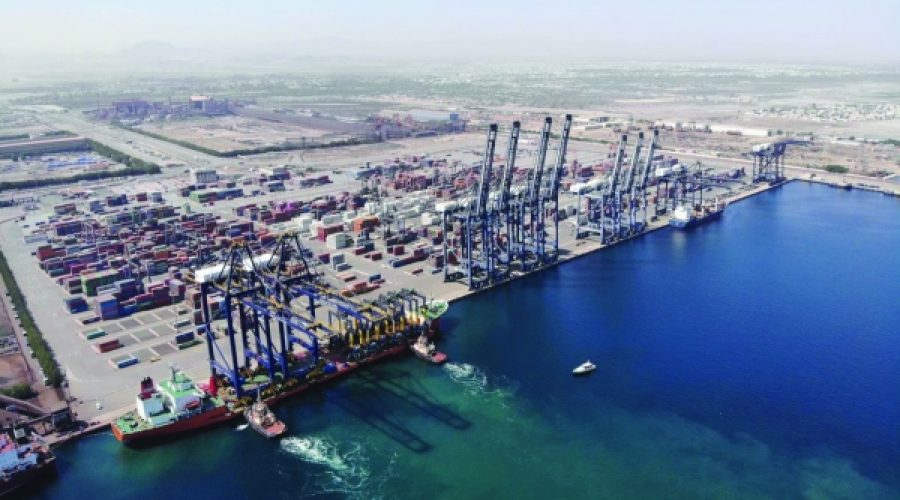Oman Ports Show Resilience Amid Global Shipping Shifts: Key Insights for Investors and Business Owners
MUSCAT: Despite challenges such as fluctuating trade patterns, port congestion, and economic uncertainty, global container traffic continues to show steady growth. According to the latest Economic Analysis Series (September 2025) by Omani logistics expert Dr. Mahmood Sakhi al Balushi, worldwide port container throughput reached 928 million TEUs in 2024, with a projected increase of 2 percent in 2025. Shanghai Port remains the leading maritime hub globally, expected to handle more than 54 million TEUs this year, accounting for approximately 5.8 percent of global volume.
In his analysis, Dr. Al Balushi, Group CEO of Al Madina Logistics Company and Bayanat Technology, highlights the importance of efficiency as a critical competitive edge for major ports. The global Container Port Performance Index (CPPI), which measures vessel turnaround times, consistently ranks Oman’s Port of Salalah among the world’s most efficient ports. Between 2020 and 2024, Salalah was ranked 5th, 1st, 2nd, 2nd, and 15th, respectively. Although its rank dipped slightly last year, it remains a top-performing global port.
The report emphasizes that Suhar and Salalah ports are key pillars of Oman’s maritime trade strategy, each fulfilling distinct yet complementary roles. SOHAR Port and Freezone, featuring a Container Terminal (operated by Hutchison Ports), General Cargo Terminal (operated by Steinweg), and Liquid Terminal (operated by Advario), serves as Oman’s principal commercial and industrial gateway. Since container handling was transferred from Sultan Qaboos Port in Muscat to Suhar in 2014, the port experienced swift growth. Although there was a temporary slowdown post-2017, it has been gradually recovering since 2021 as global trade revived after the pandemic.
Data from Dr. Al Balushi’s report reveals that SOHAR Port and Freezone’s throughput peaked in 2024, with nearly 900,000 TEUs handled. A slight decline is anticipated in 2025 based on first-half data, reflecting a broader moderation in global trade. Nonetheless, infrastructure investments and digital optimisation efforts are expected to restore stability. SOHAR remains central to Oman’s export and re-export activities, benefiting from industrial clustering in the adjacent freezone.
Meanwhile, the Port of Salalah, operated by APM Terminals, continues to be a crucial transshipment hub for Oman and the wider region. In 2024, Salalah processed just under 4.5 million TEUs, a 20 percent year-on-year decline, with approximately 90 percent of its container throughput comprising transshipment cargo. Despite this dip, forecasts predict a 14 percent recovery in 2025, supported by new capacity expansions and operational enhancements.
The report also highlights emerging global maritime routes, especially the China–Europe passage via the Arctic’s Northern Sea Route. Though currently navigable only in summer months, this route offers an 18-day transit time, presenting significant advantages for high-value sectors such as electronics, fashion, and e-commerce, potentially transforming trade patterns in the future.
Dr. Al Balushi underscores that investment in port infrastructure, digital transformation, and operational efficiency are key drivers of performance improvements worldwide. The ongoing development of Suhar and Salalah ports exemplifies Oman’s expanding role in global logistics and aligns with the Sultanate’s Vision 2040 objectives to diversify and enhance international trade connectivity.
تحليل خاص من عمانت | تصفح سوق عُمان
Oman’s strategic maritime hubs, Salalah and SOHAR, are critical assets in positioning the country as a global logistics leader, despite recent trade fluctuations. Smart investors should capitalize on ongoing infrastructure upgrades and digital transformation efforts to harness growth potential in port efficiency and transshipment services. Additionally, emerging Arctic trade routes present a forward-looking opportunity for Oman to further integrate into high-value global supply chains, aligning with Vision 2040 goals to diversify the economy.



